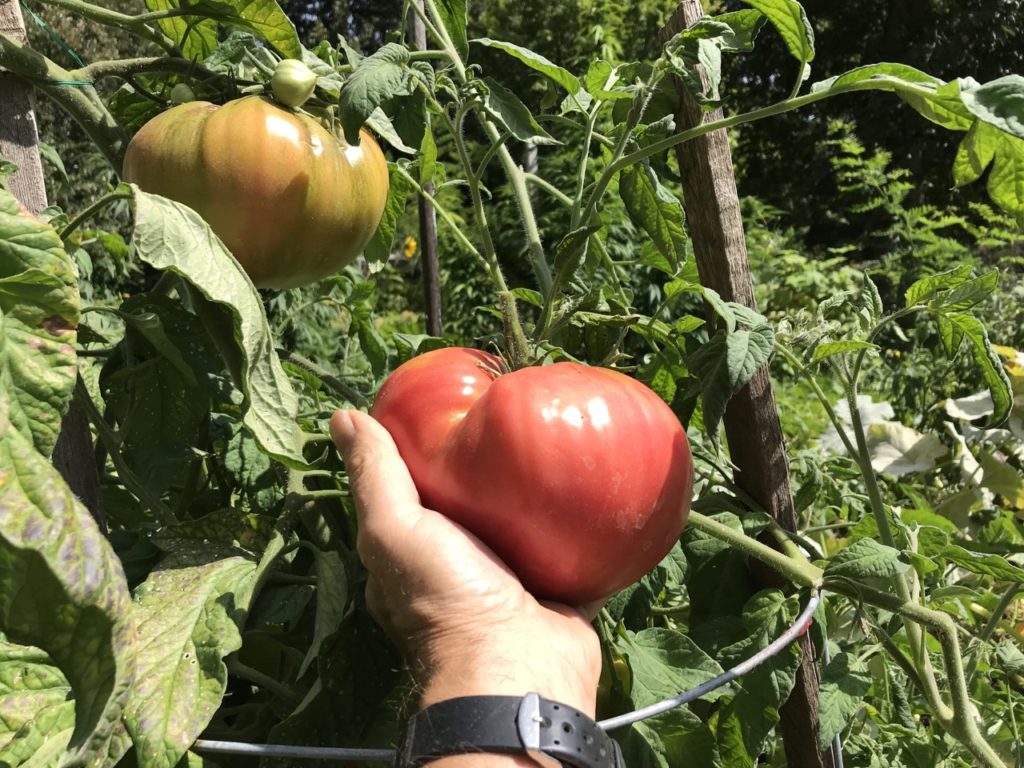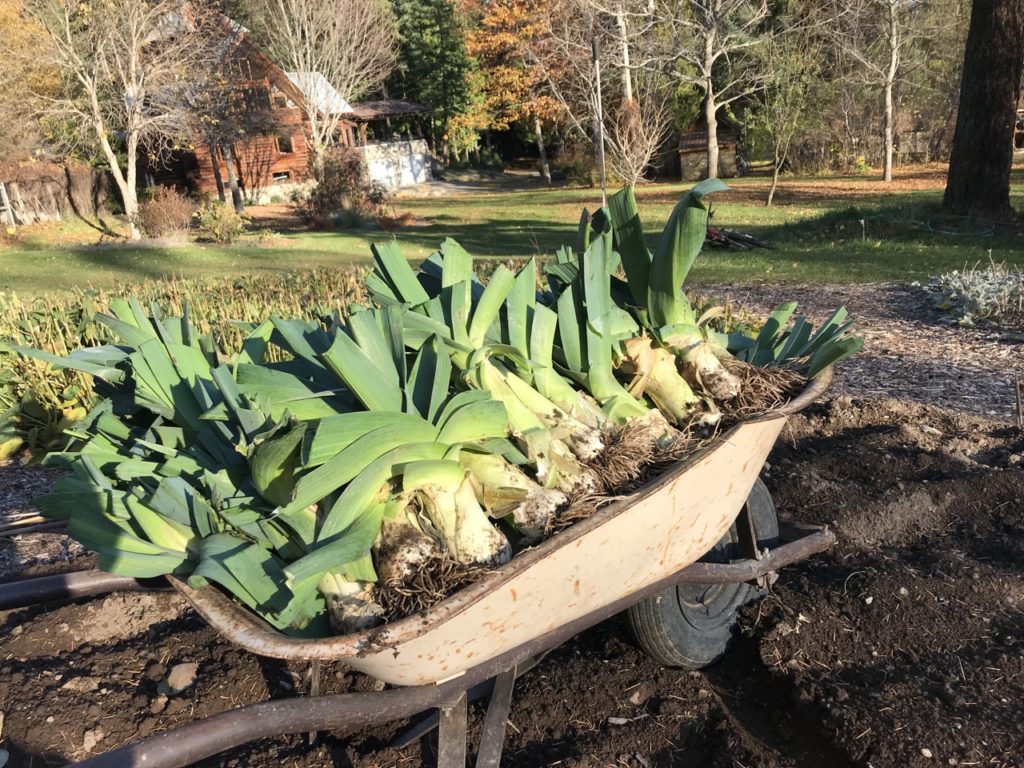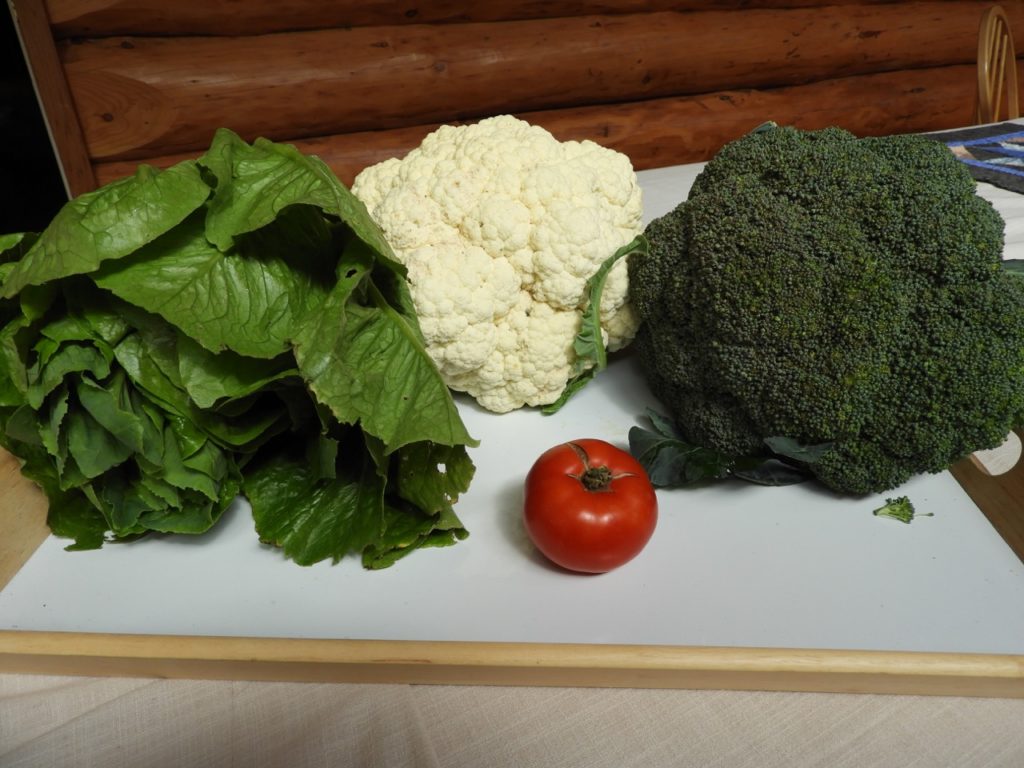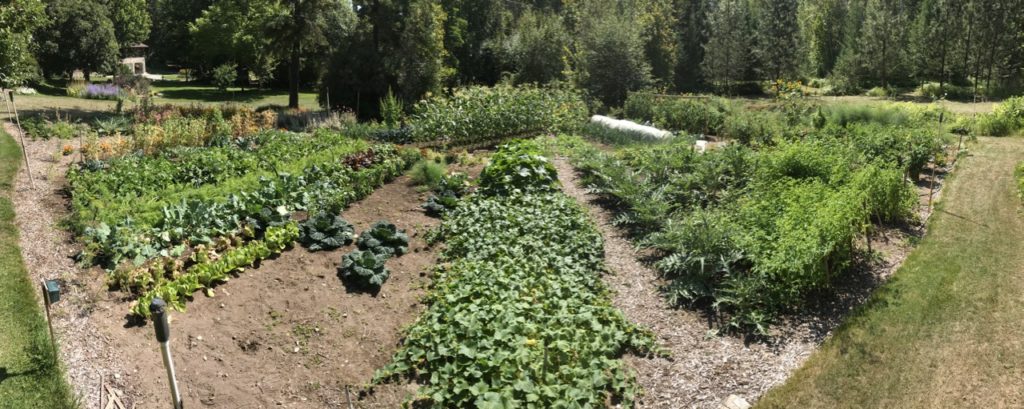
The dream of “living off the land” helped influence my decision to move to the Shuswap fifty-one years ago and live on a rural property above the lake at Lee Creek. It was just a few years ago that significant progress was made to realize that dream, when there was just one week between consuming the last of the still green garden produce and when the new greens were ready to eat from the greenhouse, along with the asparagus and the parsnips that overwintered in the garden.
Growing our own organic food, while challenging and time-consuming, does provide multiple benefits. Although it can be physically demanding, gardening is more productive than a gym workout, given we are sustained by the fruits of our labour. Five decades of tilling the same land has also included much experimentation and learning, as new crops are tried, different methods are used and pests, inclement weather and diseases take their toll.
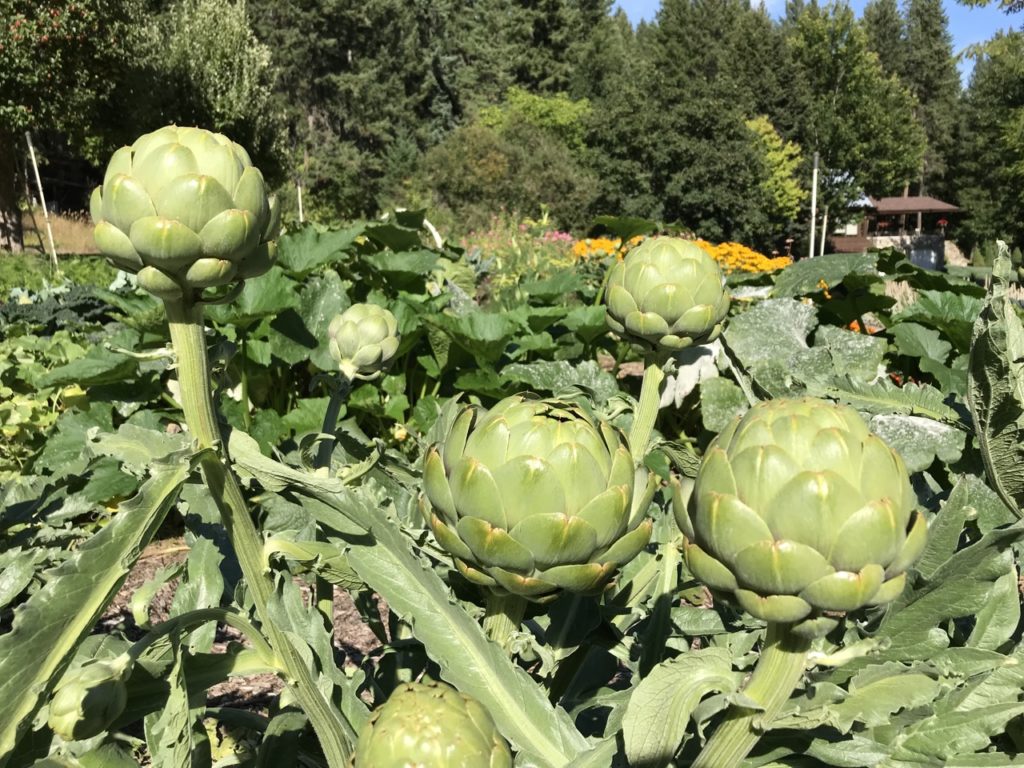
During the summer our vegetarian meals are a cornucopia of salads and vegetables direct from the garden, including some unfamiliar varieties. In addition to the standards like peas, corn, beans, onions, cucumbers, beets, peppers, tomatoes and all the cruciferous vegetables, our specialty is the artichoke.
In just the last two years we added a new vegetable to our list, fennel. It is resistant to most pests, easy to grow and can be planted throughout the summer for multiple crops.
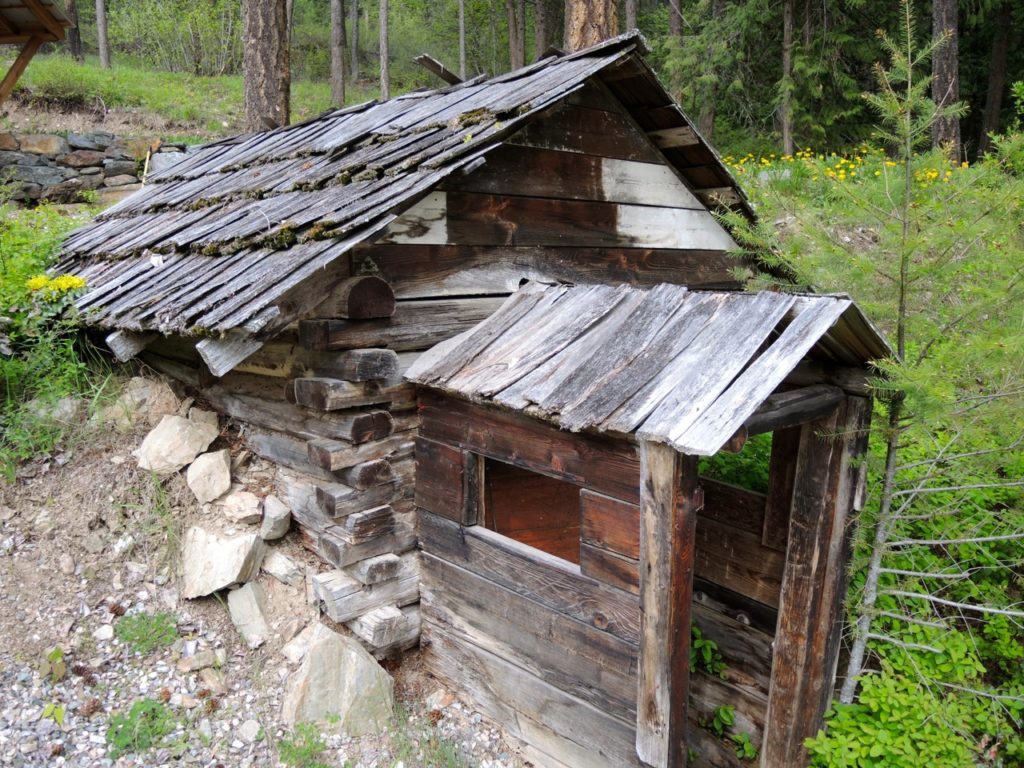
Key to being able to consume homegrown veggies year round is having effective storage methods. I built our first root cellar out of cedar logs in 1973 and used dynamite to blast out the rock in the hillside where it was built. It lasted over forty years, until the logs finally rotted away. Our new cellar is made of concrete and faced with rock. Stored there now are potatoes, beets, leeks, carrots, kale, Brussels spouts on the stem, and apples. Just this fall, I learned that placing the stalks of kale in a container of water helps it stay crisp much longer.
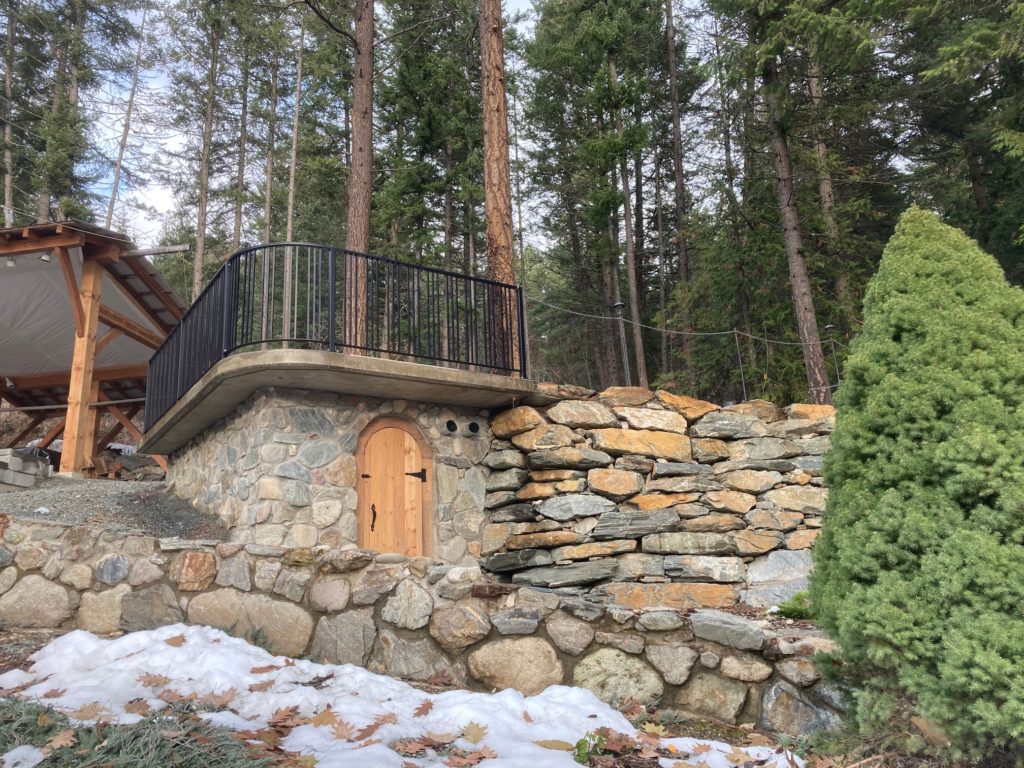
In our freezers, we have corn, peas, raspberries, currents, melon, cherries, blueberries, strawberries, Haskap berries, pesto and soups. Since freezing lowers the nutritional value of the cruciferous vegetables, we make soup out of the cauliflower and broccoli. As well, we found fennel soup to be one of the tastiest. Others soups include vichyssoise, squash and pear-parsnip. There is nothing like a hot, homemade soup for lunch on a cold winter day.
Some vegetables only need a dry, cool place in the house for storage, such as onions, garlic and winter squash. Canning and pickling are the other two key methods of storage and pickling has an added health advantage because fermentation adds healthy bacteria to ones gut that aids in digestion. In addition to canned whole tomatoes, we have tomato chutney, paste, salsa, sauce and a soup base that includes garlic and onions. The green beans are pickled, along with carrots. Instead of sauerkraut, we make kimchi, which is so good in sandwiches. Our tomatillo salsa taste best on tacos and enchiladas.
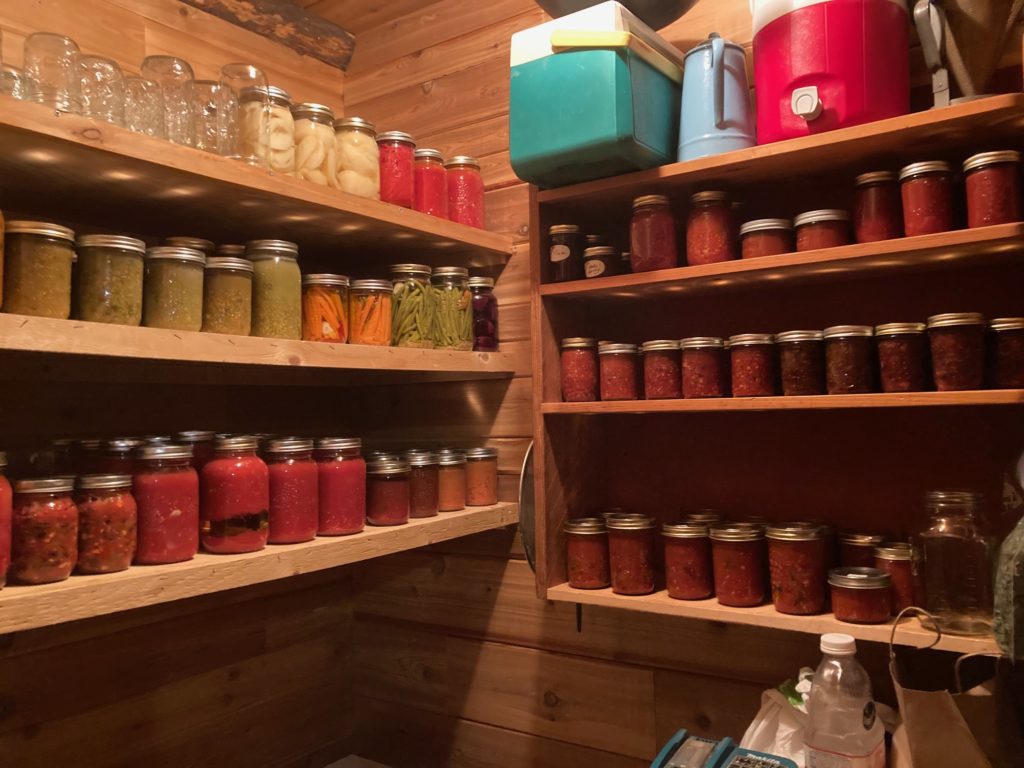
Beginning in late summer, our food dehydrators are busy drying fruit and herbs, including basil and rosemary. We make our own herbal tea from dried mint, rose petals and lavender that tastes better than most teas from a store.
The most recent addition to help with storage is perhaps the simplest, a used fridge in the garage where the cabbage keeps until spring. Another way we add homegrown nutrition to our meals during the winter is by growing sprouts in a jar and shoots under the lights when we begin starting new plants in March.
This year, for the first time, we grew Romano beans and found these very delicious, and easy to grow, harvest and store in the freezer after a brief parboil. Finally, we have found a delicious protein to add for our winter diet, allowing for some dinners to be almost fully homegrown. Thus, it is possible for nearly complete self-sufficiency in the Shuswap, where a large variety of produce can be grown.
POSTSCRIPT
I could write a book on this topic, especially if I included much of the history of our homesteading experience. You can read some of these interesting stories in the Memoir section of this blog. This column focuses on growing fruit and vegetables, while not including animal husbandry that is of course another key part of living off the land. We do have chickens for the eggs, and back in the early 1970s, we raised goats and sheep. Now that we are primarily vegetarian, there is no reason to include farm animals, but that means I need to haul in manure. For the last few decades, it has been mostly goat manure, which is one of the best because it does not contain weed seeds. I combine some of the manure, with garden waste, comfrey, the kitchen compost, and the chicken manure to make compost for the garden, which goes into the holes when I plant bedding plants, is used to side dress the heavy feeders like broccoli and artichokes and is used to cover the garlic after it is planted in October.
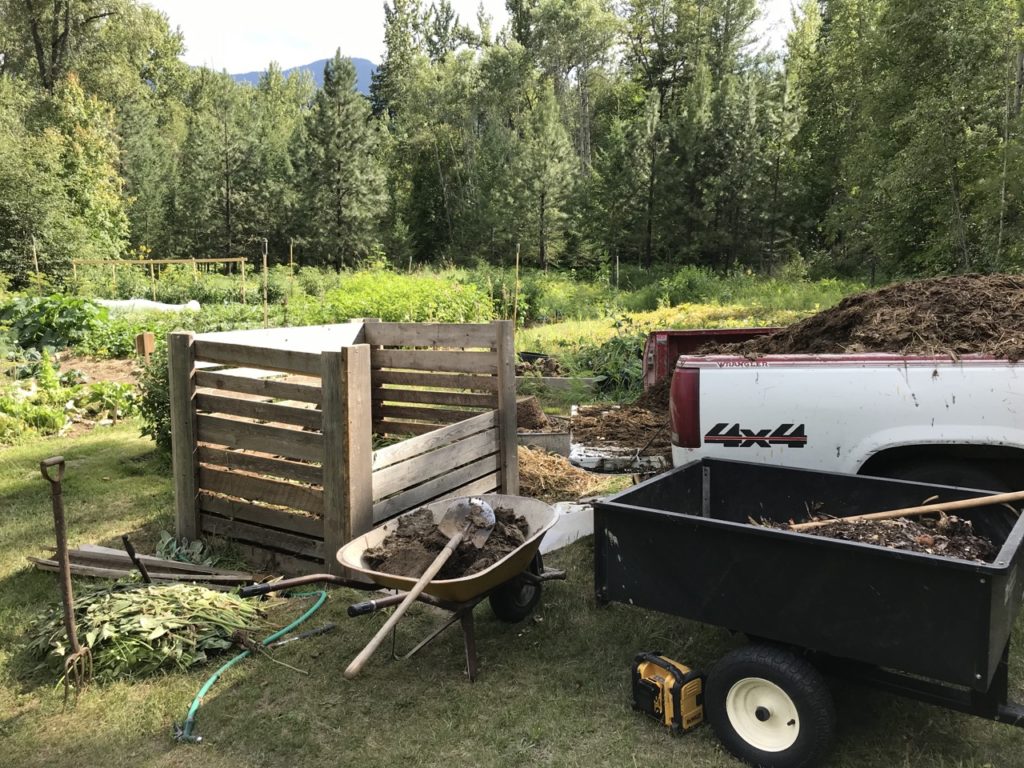
There are many variables in gardening, including when seeds are planted indoors to go under the lights, when the greenhouse is planted for an early greens crop and when seeds are planted in the garden. For the last ten years, I have kept a journal for keeping track of the planting to help as a guide for each new year. One goal is to time the planting of the cabbage to ensure it is ready to harvest at the latest date possible to reduce the time in storage. Many crops are staggered, to allow for successive harvests throughout the year.
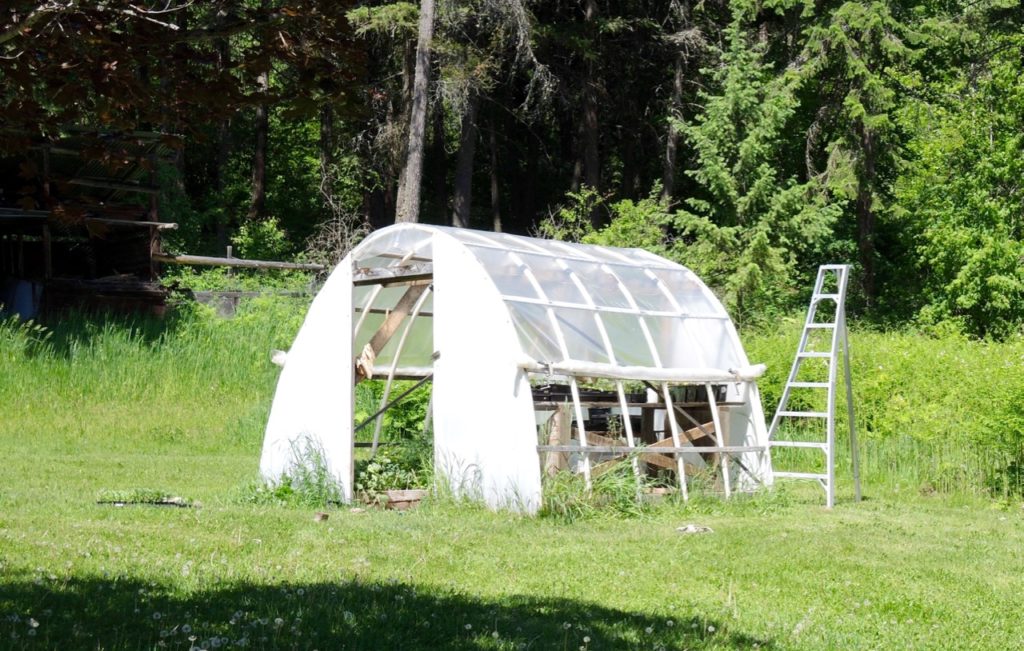
Our gardens produce far more veggies than we can consume, so we give the excess away to friends and relatives who do not have gardens. Growing excess food is a kind of insurance policy, in case of crop failures, damage from weather events, raids by deer and other losses. It seems like the longer we garden, the more pests we have to cope with, including the carrot rust fly, root maggots, aphids and white fly. this year I tried to get away without using the remay cloth to cover the carrots, but the rust flies had a field day. Next year I plan to devise a better way of covering them, because the typical method of making hoops out of plastic pipe can be annoying.
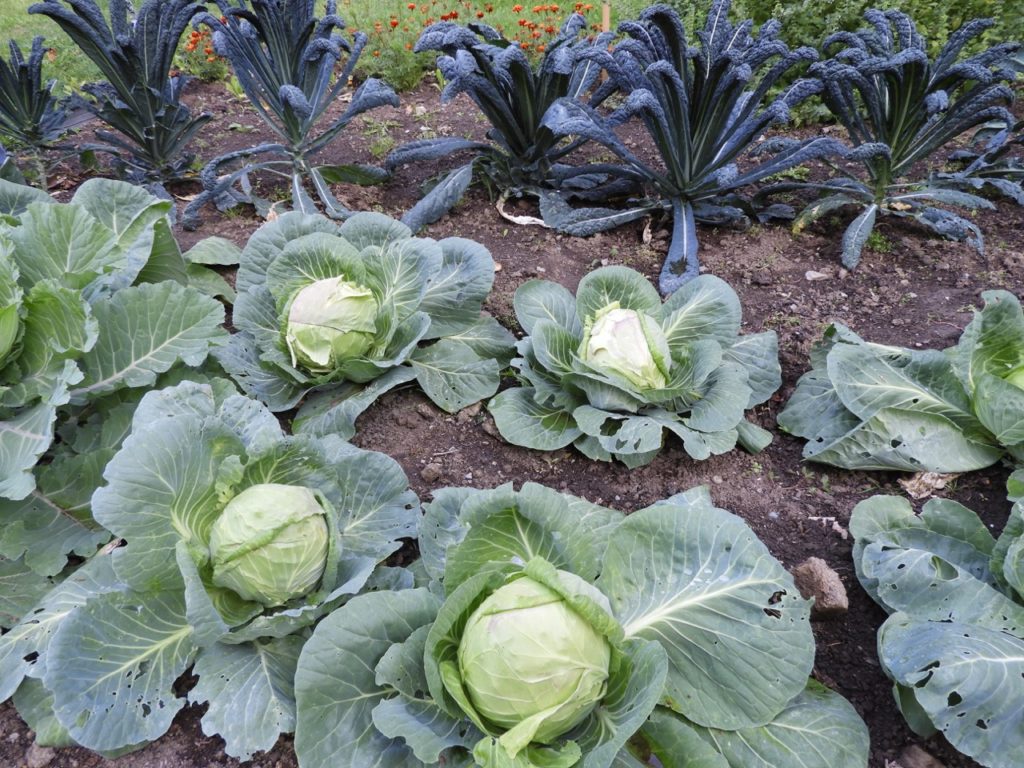
Many have tried growing artichokes, but gave up because aphid infestations are common. Our success with the plant, including growing globes that weight more than a kilogram, is in part a result of knowing that it takes ants to farm the aphids and thus a bit of ant poison will protect the plants along with frequent washing with water.
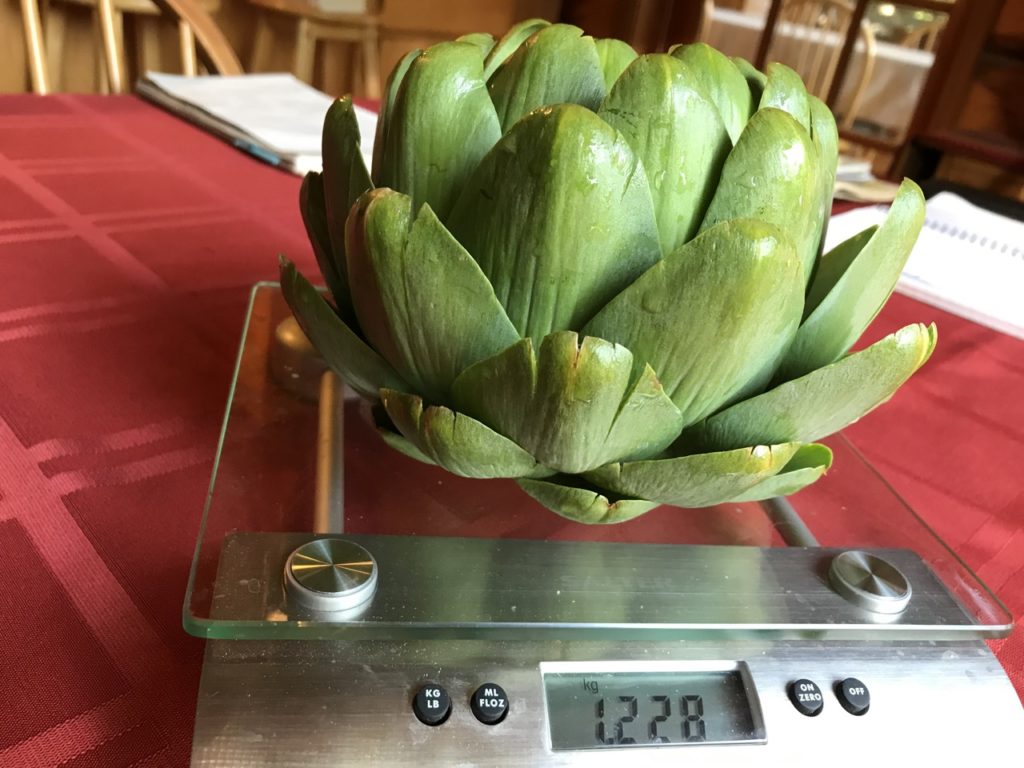
Not all attempts at growing something new are successful. One year, we grew an amazing, colourful bounty of quinoa. However, when we tried cooking it, we found that it was extremely bitter. It takes a special process to remove the bitter outer layer, which was beyond our capabilities. There are varieties that are less bitter, but seeds for these are likely difficult to obtain.
